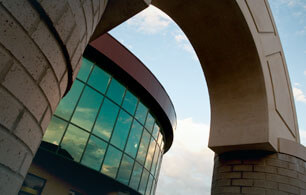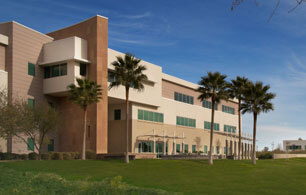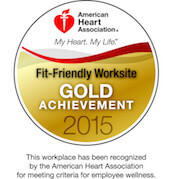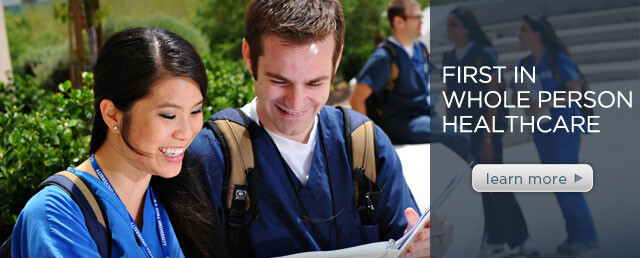
About ATSU
A.T. Still University (ATSU) of Health Sciences is the founding institution of osteopathic healthcare, established in 1892 by Andrew Taylor Still, DO. As a leading health sciences university, ATSU is comprised of three campuses (Mesa, Arizona; Santa Maria, California; and Kirksville, Missouri) on more than 200 acres with seven prestigious schools. The culturally rich learning environments include residential and online healthcare related graduate degrees as well as community-based partnerships worldwide. ATSU has more than 1,300 employees dedicated to its not-for-profit mission and an average annual enrollment of over 3,900 students from 20 countries.
ATSU is renowned for its preeminence as a multidisciplinary healthcare educator. The University is focused on integrating the founding tenets of osteopathic medicine and the advancing knowledge of today's science. ATSU continually earns distinctions as the graduate health sciences university with best-in-class curriculum and a community outreach mission to serve the underserved. The University has a rich history of leadership in both healthcare education and correlated research.
ATSU instills within students the compassion, experience and knowledge required to address the whole person and shape healthcare in communities where needs are greatest. Inspired to influence whole person healthcare, ATSU graduates contribute to the future of integrated care while also leading with a selfless passion in the communities they serve.
-
Colleges & Schools +
-
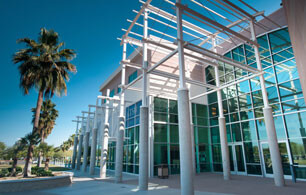
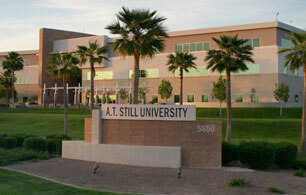
Arizona School of Health Sciences (ASHS)
- Doctor of Athletic Training (DAT), Online
- Doctor of Audiology (AuD), Residential
- Doctor of Audiology (AuD), Online
- Doctor of Medical Science (DMSc), Online
- Doctor of Occupational Therapy (OTD), Residential
- Doctor of Physical Therapy (DPT), Online
- Doctor of Physical Therapy (DPT), Residential
- Master of Science in Athletic Training (MS), Online
- Master of Science in Occupational Therapy (MS), Residential
- Master of Science in Physician Assistant Studies (MS), Residential
- Certificate in Clinical Decision Making in Athletic Training, Online
- Certificate in Rehabilitation, Online
- Certificate in Orthopaedics, Online
- Neurologic Physical Therapy Residency (Non Degree Seeking)
- Orthopedic Physical Therapy Residency (Non Degree Seeking)
- Post-Professional Doctor of Audiology Program Online Non-Degree

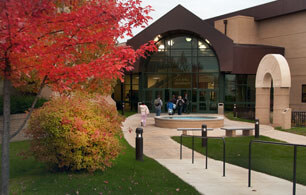
College of Graduate Health Studies (CGHS)
- Doctor of Education (EdD), Online
- Doctor of Health Administration (DHA), Online
- Doctor of Health Sciences (DHSc), Online
- Doctor of Nursing Practice (DNP), Online
- Master of Education in Health Professions, Online
- Master of Health Administration (MHA), Online
- Master of Health Sciences (MHSc), Online
- Master of Public Health (MPH), Online
- Master of Public Health, Dental Emphasis (MPH), Online
- Master of Public Health, Dental Emphasis with Dental Public Health Residency (MPH), Online
- Master of Science in Kinesiology (MS), Online
- Certificate in Adaptive Sports, Online
- Certificate in Corrective Exercise & Orthopedic Rehabilitation, Online
- Certificate in Exercise and Sport Psychology, Online
- Certificate in Fundamentals of Education, Online
- Certificate in Geriatric Exercise Science, Online
- Certificate in Global Health, Online
- Certificate in Health Professions Education, Online
- Certificate in Leadership and Organizational Behavior, Online
- Certificate in Sports Conditioning, Online

-
Mission and Vision +
-
MISSION
A.T. Still University of Health Sciences serves as a learning-centered university dedicated to preparing highly competent professionals through innovative academic programs. The University is committed to continuing its osteopathic heritage and focus on whole person healthcare, scholarship, community health, interprofessional education, diversity, and underserved populations.
VISION
[To be] The preeminent University for the health professions
Leading innovator in health professions education- Innovative curricular models
- Distinguished and effective faculty
- Diversity in student body, faculty, and staff
- Life-long learning
- Integrated technology into health professions education
- Full scholarship programs
- Advanced scholarship in osteopathic tenets
- Students and graduates model osteopathic tenets
- Whole person healthcare approach
-
-
Tenets of Osteopathic Medicine+
-
- The body is a unit; the person is a unit of body, mind, and spirit;
- The body is capable of self-regulation, self-healing, and health maintenance;
- Structure and function are reciprocally related; and
- Rational treatment is based upon an understanding of the basic principles of body unity,self-regulation, and the interrelationship of structure and function.
Application of these tenets in whole person healthcare*
-
-
Accreditation+
-
A.T. Still University is accredited by the Higher Learning Commission
230 S. LaSalle Street, Suite 7-500,
Chicago, IL 60604Phone: 800.621.7440 | Fax: 312.263.7462
Email: info@hlcommission.orgAccreditation by school and programs
- Arizona School of Dentistry & Oral Health
- Arizona School of Health Sciences
- Athletic Training
- Audiology
- Occupational Therapy
- Physician Assistant
- Physical Therapy
- College of Graduate Health Studies
- Doctor of Health Administration
- Doctor of Education in Health Professions
- Doctor of Health Sciences
- Doctor of Health Sciences Fundamentals of Education Certificate
- Doctor of Health Sciences Global Health Certificate
- Doctor of Health Sciences Leadership and Organizational Behavior Certificate
- Master of Health Administration
- Master of Public Health
- Master of Public Health – Dental Emphasis
- Master of Public Health – Dental Emphasis with a Dental Public Health Residency Certificate
- Master of Science in Kinesiology
- Kirksville College of Osteopathic Medicine
- Missouri School of Dentistry & Oral Health
- School of Osteopathic Medicine in Arizona
-
-
Awards and Recognition+
-
 The Military Friendly® Schools designation is awarded to the top 15 percent of colleges, universities and trade schools in the country that are doing the most to embrace military students, and to dedicate resources to ensure their success in the classroom and after graduation.
The Military Friendly® Schools designation is awarded to the top 15 percent of colleges, universities and trade schools in the country that are doing the most to embrace military students, and to dedicate resources to ensure their success in the classroom and after graduation.
 A.T. Still University of Health Sciences (ATSU) is one of the best colleges in the nation to work for, according to a new survey by The Chronicle of Higher Education.
A.T. Still University of Health Sciences (ATSU) is one of the best colleges in the nation to work for, according to a new survey by The Chronicle of Higher Education.
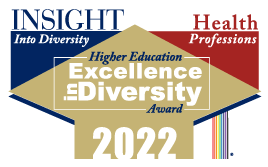 ATSU received the Health Professions Higher Education Excellence in Diversity (HEED) Award from INSIGHT Into Diversity magazine for 2017, 2018, 2019, 2020, 2021 and 2022. The HEED Award and the Health Professions HEED Award are the only national awards that honor individual institutions for being outstanding examples of colleges, universities, or health profession schools that are committed to making diversity and inclusion a top priority across their campuses.
ATSU received the Health Professions Higher Education Excellence in Diversity (HEED) Award from INSIGHT Into Diversity magazine for 2017, 2018, 2019, 2020, 2021 and 2022. The HEED Award and the Health Professions HEED Award are the only national awards that honor individual institutions for being outstanding examples of colleges, universities, or health profession schools that are committed to making diversity and inclusion a top priority across their campuses.
-
-
Evidence-Based Medicine +
-
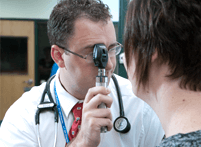

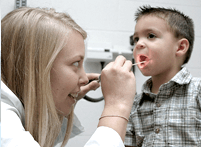
Principles of evidence-based medicine
A.T. Still University's (ATSU) integrated learning platform includes the principles of evidence-based medicine (EBM) alongside ATSU's founding tenets of whole person healthcare. Students learn not only in the classroom but also in actual practice settings. The elements of evidence-based medicine can be applied to any patient treatment-oriented practice field, allowing medical and healthcare workers to provide each patient with current treatment options based on the latest, most clinically relevant research including clinical trial results.
Evidence-based medicine is defined as "the conscientious, explicit and judicious use of current best evidence in making decisions about the care of individual patients, the practice of evidence-based medicine means integrating individual clinical expertise with the best available external clinical evidence from systematic research" according to David L. Sackett, pioneer of evidence-based medicine, and his colleagues.
Because EBM also is used in allied fields, including dentistry, nursing and psychology, the healthcare industry is embracing a more universal term: evidence-based practice (EBP).
The need for evidence-based medicine
Studies suggest our need for best evidence occurs twice in every three outpatient visits and up to five times per inpatient visit. The amount of new medical information formed daily is overwhelming. It is impossible to know everything. With this rapid formation of data, familiar sources such as textbooks are out of date by the time they reach the shelf. The development of online EBM tools and journals containing pre-analyzed articles help individual providers keep current.
Most importantly, practicing evidence-based medicine leads to improved patient outcomes and offers the surest and most objective way to determine and maintain consistently high quality and safety.
Myths about evidence-based medicine
Evidence-based medicine is not a new concept. The term evidence-based medicine was coined in 1992 by a group at McMaster University, but clinicians have always used evidence to make decisions about patient care. The evidence just may not have been the "best" evidence due to any number of reasons.
Some fear that EBM is an example of cookbook medicine, a way to cut costs of health care, or a way to keep patients from receiving the care they deserve. None of these fears is true. There will never be one recipe that fits all patients, and as stated clearly in the definitions above, EBM involves integration of clinical expertise and individual patient values. In some cases, the results of EBM may cut costs by eliminating unnecessary procedures or treatments; however there also may be situations where it is the expensive procedure or treatment that provides the best results for patients. Along that same line, practicing EBM is a way to eliminate unnecessary expenditure which, in theory, would allow more money to decrease the treatment and diagnostic disparities present in today's society.
Many can agree with the concept of EBM but are unsure that it can be practiced in a busy clinic. In reality, it is those busy clinicians who can benefit the most from the growth of EBM. As the search engines become quicker and the number of secondary sources grows, it will be easier than ever to find the answer to a clinical question that arises from a 15-minute office visit.
A.T. Still University/Kirksville College of Osteopathic Medicine
800 W. Jefferson
Kirksville, MO 63501-1497
Phone: 660-626-2276
Fax: 660-626-2925
scoon@atsu.edu
-
-
Hometown Scholars +
-
Do you want to help improve the health of your community?
Do you desire to work in your community's health center?
Do you aspire to be a doctor, dentist or physician assistant?If you answered "yes," then ATSU's Hometown Scholars may be for you!
ATSU's Hometown Scholars programs were started in response to requests from community health centers (CHCs) and other safety net providers. Hometown Scholars help ATSU meet the needs of CHCs by attracting and training dedicated, motivated, and qualified community-minded dentists.
Discover how you might become a Hometown Scholars endorsed applicant for:
- Arizona School of Dentistry & Oral Health (DMD)
- Arizona School of Health Sciences Physician Assistant program (MS)
- Missouri School of Dentistry & Oral Health (DMD)
- School of Osteopathic Medicine in Arizona (DO)
-
-
Our Communities +
-
Kirksville, Missouri

The best of education is represented in Kirksville. Among the notable colleges and other institutions of higher learning, Kirksville is the home of osteopathic medicine and the world's first osteopathic university - A.T. Still University - founded by Andrew Taylor Still, DO, in 1892. Steeped in tradition and infused with innovation while always highlighting the importance of community, the city is located in northeastern Missouri in a growing city of nearly 20,000 residents. Kirksville is a thriving college community, offering a low cost of living and a high quality of life. Kirksville residents enjoy a variety of cultural activities that appeal to a wide range of tastes. On Saturday mornings from May through October, local farmers' markets offer fresh fruits and vegetables during the prime growing season. For outdoor recreationists, a state park, five conservation areas, and three large lakes are just a few miles away with camping, swimming, and boating facilities. For those who prefer to stay active in the city, a sports complex, YMCA, aquatic center, and neighborhood parks are available for public use. Kirksville also is host to several festivals and offers one-of-a-kind shopping opportunities, especially in the historic downtown area, not to mention many dining options.
Within easy driving distance of major cities such as Kansas City, St. Louis, and Des Moines, Iowa, Kirksville also provides easy access to Missouri's notable Lake of the Ozarks, Hannibal, Nauvoo, and Mennonite and Amish communities. To learn more about Kirksville and tourism information, go to visitkirksville.com.
Mesa, Arizona

Progressive, vibrant, and diverse, Mesa, Arizona, is the state's third largest city. It is nestled in the Valley of the Sun, boasting more than 300 days of sunshine every year. More than 468,012 residents call this dynamic urban setting their home, complete with a first-class business environment, highly educated work force, and quality of life that appeals to a variety of lifestyles.
Just west of Mesa in the Valley of the Sun is the city of Phoenix, the capitol of Arizona and the nation's fifth largest city. The Valley offers professional football, baseball, hockey, and basketball; two national parks, including the Grand Canyon; 25 state parks; and hundreds of miles of trails for hiking, biking, and horseback riding. World-class golf courses, shopping, movie theatres, symphony, opera, art festivals, museums, and restaurants provide diverse opportunities to sample the cosmopolitan lifestyle of the Valley of the Sun. In the desert areas of Arizona, there is little rain or snow, and the winter temperatures are mild. Although summers are hot in the desert, there is relatively low humidity, making the actual temperatures more comfortable than in most other states during the same time frame. To learn more about Mesa, please visit visitmesa.com.
To learn more about the Phoenix metro area, please visit visitphoenix.com.SANTA MARIA, CALIFORNIA
Nestled in the middle of California’s Central Coast Region with a population of just under 110,000, Santa Maria, California, is home to ATSU’s newest campus. Located just 76 miles north of Santa Barbara and 170 miles north of Los Angeles, Santa Maria is the perfect place for those who enjoy exploring the great outdoors, eating delicious barbecue, and visiting world-class wineries.
With average highs in the upper 60s to low 70s and lows in the upper 50s, Santa Maria is a beautiful place to live year-round. The Santa Maria Valley is home to 34 tasting rooms, 24 hiking trails, and 15 beaches within a 30-minute drive. The area has a variety of cultural offerings and is home to the Santa Maria Museum of Flight, Santa Maria Philharmonic Orchestra, and Santa Maria Civic Theater, the oldest theater group in the region. The city is also home to the Pacific Conservatory of the Performing Arts, a professional conservatory theatre with famous alumni, including Kathy Bates, Zac Efron, and Robin Williams.
In addition to great food and drink and a love for the arts, the city has a rich history. In 1904, oil was discovered in the Santa Maria Valley near Orcutt, leading to a flourishing oil industry. Today, the area is more known for its vineyards and wineries. Also popular for its delicious strawberries, the city hosts the Santa Maria Valley Strawberry Festival every April to kick off strawberry season. The region also produces celery, lettuce, peas, squash, cauliflower, spinach, and more!
To learn more about Santa Maria, visit santamariavalley.com and cityofsantamaria.org.
ST. LOUIS, MISSOURI
Referred to by many as the “Gateway to the West, ” St. Louis is a vibrant city along the mighty Mississippi river that is well-known for its iconic Gateway Arch, the 11-time World Series champion St. Louis Cardinals baseball and 2019 Stanley Cup champion St. Louis Blues hockey teams, and home to Anheuser-Busch headquarters and their world-famous Budweiser Clydesdales. Boasting a rich arts-and-culture scene, St. Louis is also home to the world renowned St. Louis Art Museum, Missouri History Museum, Citygarden Sculpture Park, National Blues Museum, and The Fabulous Fox Theatre performing arts center. Family-friendly recreational and educational experiences offer residents and guests an opportunity to explore the City’s beautiful parks, historic Union Station, the St. Louis Zoo, St. Louis Science Center, Missouri Botanical Garden, Butterfly House, Grant’s Farm, and a plethora of live music clubs and acclaimed restaurants.
The history of St. Louis also offers residents and guests interest and intrigue as a previous host of the St. Louis World’s Fair – The Louisiana Purchase Exposition of 1904 and Olympic games. The fair, garnering St. Louis international attention, celebrated the centennial of President Thomas Jefferson’s well-known $15 million real estate deal with Napoleon Bonaparte of France for 600 acres of the Louisiana Territories. One year following the deal, President Jefferson’s exploration team, led by Meriwether Lewis and WIlliam Clark, departed St. Louis to map the newly established U.S. lands.
The Olympic games were held at Washington University's Francis Field, in conjunction with the seven-month fair. More than 20 million people attended the events, making famous the song "Meet Me in St. Louie, Louie."
Located near the confluence of the Mississippi and Missouri rivers and forming the eastern boundary of the state of Missouri, the city of St. Louis is now home to more than 276,000 residents, and boasts an impressive 2.79 million people within the Greater St. Louis metropolitan area. A light rail system seamlessly connects visitors to Lambert International Airport making St. Louis easy to get to and even easier to get around.
Opportunities for fun and adventure are abundant in the Gateway City. To learn more about St. Louis and all it has to offer faculty, staff, and students, visit: explorestlouis.com.
-
-
Our Founder +
-
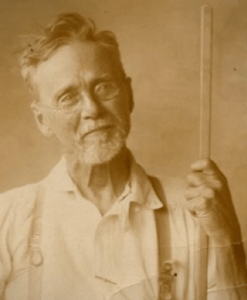
Museum of Osteopathic Medicine SM [2000.34.05]
Andrew Taylor Still, DO, was born Aug. 6, 1828, in a log cabin in Lee County, Va. Around 1853, he decided to become a physician. It was common practice in those days for an aspiring doctor to train by studying medical books and working with a practicing physician – in this case, his father. He may have received additional, formal training at a school in Kansas City, but no records remain to establish where and when this training took place.
Personal Defeat
In 1864, Dr. Still returned from the Civil War and faced a grave personal crisis. Earlier that year, an epidemic of spinal meningitis had swept through the area and killed three of his children. He had already lost his first wife, Mary Vaughan, to childbirth complications; a month after the epidemic, the daughter born to his second wife, Mary Elvira Turner, died of pneumonia. His inability to save his family, coupled with his grim experiences as a Civil War doctor, led Dr. Still to reject most of what he had learned about medicine and search for new and better methods.
A New Revolution
Dr. Still's explorations were grounded in the study of anatomy. Having grown up as a hunter and farmer, he had a basic understanding of the structural relationships of bones, muscles, and organs – knowledge he now extended through the study of human skeletons. He became convinced that most diseases could be alleviated or cured without drugs. The key was to find and correct anatomical deviations that interfered with the free flow of blood and "nerve force" in the body.
Facing Challenges
From the beginning, Dr. Still met with considerable opposition to his new theories and techniques. The local church denounced his claims of hands-on healing as sacrilegious. His brothers were embarrassed by his outspoken questioning of medical tradition; they criticized his willingness to risk his livelihood by driving away patients and to neglect his family and farm in pursuit of his "crazy" ideas. When Dr. Still asked to present his ideas at Baker University, which his family had helped to establish in the 1850s, school officials refused him permission. In 1874, Dr. Still decided to leave Kansas and travel to Macon, Mo., where he hoped his ideas would be better received. They were not, and after a few months of trying, Dr. Still moved north to Kirksville. There he finally began to find some acceptance, enough to open an office on the town square in March 1875. Advertising himself as a magnetic healer and a "lightning bonesetter" and traveling to towns as far away as Hannibal, Dr. Still slowly built up his reputation. Word spread about the doctor whose system of drugless, manipulative medicine - officially named "osteopathy" in 1885 - was able to cure many apparently hopeless cases.

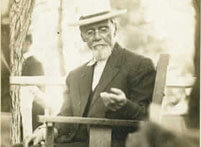

Osteopathy is Born
Finding he had more patients than he could handle, Dr. Still trained his children and a few others to assist him in his practice. Finally, there were enough people who wanted to learn his methods that he was persuaded to start a school. The American School of Osteopathy was founded in Kirksville in 1892 in a two-room frame building. The first class of five women and 16 men – including three of Still's children and one of his brothers – graduated in 1894. That institution is known today as A.T. Still University, the first osteopathic university in the world that now is the preeminent leader of whole person healthcare education.
More information about Dr. Still is available through ATSU's Museum of Osteopathic Medicine, whose mission is to preserve and promote the history and tenets of osteopathy through collections and research to a global audience.
-
-
Our Chancellor +


Craig Phelps, DO
Craig M. Phelps, DO, '84, is the twelfth president of ATSU. Prior to his presidency, Dr. Phelps served as ATSU's executive vice president for strategic initiatives and as provost of ATSU's Mesa, Ariz., campus for 12 years, overseeing the development and operations of School of Osteopathic Medicine in Arizona, Arizona School of Dentistry & Oral Health, and Arizona School of Health Sciences.
Dr. Phelps is a fellowship-trained primary care sports medicine physician and is board certified in family medicine. Practicing for more than 20 years in the Phoenix metropolitan area, Dr. Phelps served as primary care physician for the NBA Phoenix Suns and WNBA Phoenix Mercury, physician for Ballet Arizona, team physician for Grand Canyon University, Scottsdale Community College, Paradise Valley Community College, and Gateway Community College.
Dr. Phelps is a fellow of the American Osteopathic Academy of Sports Medicine, and he is a member of the Kirksville Osteopathic Alumni Association. He also served as the 2013-14 president of the Arizona Osteopathic Medical Association.
In 2012, Dr. Phelps was named to the Phoenix Business Journal's Most Admired CEOs and Top-Level Executives. He was chosen as one of the Phoenix-area's 25 most admired executives based on past achievements and ongoing outstanding leadership.
-
Quick Facts +
-
A.T. Still University is home to the founding college of osteopathic medicine. It is the oldest osteopathic institution in the world, founded in 1892.
ATSU Schools
- Arizona School of Dentistry & Oral Health
- Arizona School of Health Sciences
- College of Graduate Health Studies
- College for Healthy Communities
- Kirksville College of Osteopathic Medicine
- Missouri School of Dentistry & Oral Health
- School of Osteopathic Medicine in Arizona
Campus Information
Location
Population
Campus Size
Kirksville, Missouri
17,530
168.04 acres
Mesa, Arizona
512,498
53 acres
Santa Maria, California
110,125
25,000 square foot facility
The St. Louis Dental Center is an additional ATSU facility, situated on 6.742 acres in St. Louis, Missouri.
Enrollment DATA
(Fall 2024)ATSU School
Students Enrolled
Arizona School of Dentistry & Oral Health
328
Arizona School of Health Sciences
998
College of Graduate Health Studies
755
College for Healthy Communities
141
Kirksville College of Osteopathic Medicine
680
Missouri School of Dentistry & Oral Health
269
School of Osteopathic Medicine in Arizona
525
Total
3,696
International Enrollment
Approximately 133 Non-Resident students from more that twenty-two countries.
Enrollment Status
Status
Percentage of Enrolled
Full-Time
85%
Part-Time
15%
Male
33%
Female
66%
Undisclosed
1%
Race/Ethnicity
Ethnicity
% of FT enrollment
Non-Resident Alien
4%
Hispanic/Latino
13%
American Indian or Alaska Native
1%
Asian
15%
Black or African American
7%
Native Hawaiian or Other Pacific Islander
0%
White
51%
Two or More Races
6%
Race/Ethnicity Unknown
3%
Degrees Granted (2022-23)
Degree
Total Degrees Issued
Doctoral
820
Master's
397
Certificates
203
Full-Time Employees (Benefit-Eligible)
892
Student/Faculty Ratio
4.8:1
Number of Student Organizations
Approximately 131
GPA of Incoming Students
(2024-25)school/college
Average GPA
Kirksville College of Osteopathic Medicine- Doctor of Osteopathic Medicine
3.65 cumulative, 3.59 science
School of Osteopathic Medicine- Doctor of Osteopathic Medicine
3.53 cumulative, 3.45 science
Arizona School of Dentistry & Oral Health- Doctor of Dental Medicine
3.52 cumulative, 3.43 science
Missouri School of Dentistry & Oral Health- Doctor of Dental Medicine
3.56 cumulative, 3.46 science
MCAT Scores of Incoming Students
(Average)School
Average Score
Kirksville College of Osteopathic Medicine
502
School of Osteopathic Medicine in Arizona
502
DAT Scores of Incoming Students
(Average)School
Average Score
Arizona School of Dentistry & Oral Health
19.51
Missouri School of Dentistry & Oral Health
19.33
Percentage of Students Receiving Scholarships and/or Federal Financial Aid
76%
-
Graduation Rates (2023-24)
Note: Graduation rates for online programs are figured 5 years after matriculation for masters degrees (2018-19) and 7 years after matriculation for doctorate (2016-17). Residential program grad rates are figured 3 years after matriculation for masters degree (2021 matriculates) and 5 years after matriculation for doctorate (2019 matriculates). More detailed outcome data can be found on School and College webpages. Graduation rate calculations on webpages may vary from those below due to discipline accreditation directives regarding timing and formulas.
School/College
Average Graduation Rate
Arizona School of Dentistry & Oral Health
94%
Arizona School of Health Sciences
95%
College for Healthy Communities
98%
College of Graduate Health Studies*
67%
Kirksville College of Osteopathic Medicine
91%
Missouri School of Dentistry & Oral Health
95%
School of Osteopathic Medicine in Arizona
91%
* All College of Graduate Health Studies programs are online.
This was the first graduating class, their start date was in 2021 rather than 2020.Number of Degree Programs (fall 2024)
Degree
Total Degree Programs
Doctoral
16
Master's
15
Certificates
21
Residency-No degree
2
Budget (Fiscal Year 2024-25)
$209 million
-
Alumni Distribution
 Click the map to enlarge view of A.T. Still University alumni practice locations in U.S.
Click the map to enlarge view of A.T. Still University alumni practice locations in U.S.
-
Outcomes: Board and/or licensing exam results (National rates posted when available)
Physical Therapy first-time pass ratesYear
ATSU-ASHS
National
2018
83.1%
98.3%
2019
85%
100%
2020
92.2%
91.2%
2021
87.1%
100%
2022
96.7%
100%
2023
81.0%
98.4%
2024
86.0%
93.0%
Occupational Therapy (MS) Board Certification exam pass rates
Year
ATSU-ASHS
National
2018
100%
98%
2019
100%
98%
2020
100%
97%
2021
97%
98%
2022
94%
96%
2023
98%
-
Occupational Therapy (OTD) Board Certification exam pass rates
Year
ATSU-ASHS
National
2019
100%
98%
2020
100%
97%
2021
100%
98%
2022
100%
96%
2023
94%
-
Physician Assistant Certifying exam first-time exam pass rates
Year
ATSU-ASHS
National
2018
100%
98%
2019
94%
93%
2020
94%
95%
2021
84%
93%
2022
92%
92%
2023
98%
92%
Audiology Praxis exam pass rates
Year
ATSU-ASHS
National
2018-19
100%
92.5%
2019-20
100%
89.1%
2020-21
88.89%
87.2%
2021-22
83.33%
TBD
2022-23
78.94%
TBD
INBDE Pass Rates
Year
ATSU-ASDOH
ATSU-MOSDOH
Class of 2022
97%
100%
Class of 2023
99%
100%
Class of 2024
100%
100%
COMLEX Level 1 pass rates
Year
ATSU-KCOM
ATSU-SOMA
National
2018-19
94.05%
96.1%
93%
2019-20
98.17%
97.1%
94.34%
2020-21
92.05%
92.7%
93.7%
2021-22
95.54%
89.81%
92.20%
2022-23
90.51%
89.54%
90.60%
2023-24
96.13%
83%
93.05%
COMLEX Level 2-CE pass rates
Year
ATSU-KCOM
ATSU-SOMA
National
2018-19
96.91%
95%
95.6%
2019-20
97.09%
100%
96.84%
2020-21
99.21%
99%
96.54%
2021-22
98.26%
92.66%
95.06%
2022-23
95.71%
95.13%
94.50%
2023-24
92.99%
94%
92.51%
COMLEX Level 2-PE pass rates
Year
ATSU-KCOM
ATSU-SOMA
National
2016-17
86%
94%
93%
2017-18
95%
91%
93%
2018-19
95.4%
93%
93.2%
2019-20
94%
95%
92.1%
2020-21
Suspended by NBOME until further notice
COMLEX Level 3 pass rates
Year
ATSU-KCOM
ATSU-SOMA
National
2017-18
98%
96%
95%
2018-19
96.7%
97%
97.49%
2020
96.75%
96.75%
97.05%
2021-22
96.75%
97.05%
2022-23
94.74%
97.43%
96.25%
2023-24
98.8%
96%
94.7%
-
-
What is Osteopathic Medicine? +
-
"To find health should be the object of the doctor; anyone can find disease."
– Andrew Taylor Still, DOOsteopathic medicine is a unique form of American medical care that was developed in 1874 by Andrew Taylor Still, DO, founder and namesake of A.T. Still University (ATSU), the world's first osteopathic medical school. Dissatisfied with 19th century healthcare, Dr. Still founded a philosophy of medicine based on ideas that date back to Hippocrates, the Father of Medicine, and which focuses on the unity of the body. Dr. Still pioneered the concept of wellness and identified the musculoskeletal system as a key element of health.
Osteopathic physicians take a whole person approach to caring for patients. Instead of treating specific symptoms or illnesses, they regard the body as an integrated whole.
"Over the past few years, osteopathic medicine's traditional principles and practices (especially those focused on patient-centered, preventive care) have been heralded as central features of the kind of health care system that reform efforts aim to implement," states Stephen C. Shannon, DO, MPH, President, American Association of Colleges of Osteopathic Medicine. "In other words, osteopathic medical schools are educating the kind of physicians this country needs, and that fact is being increasingly recognized throughout the nation."
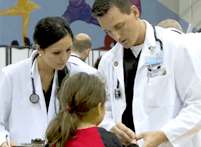
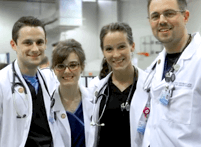

Osteopathic medicine in practice
Today, osteopathic physicians and allied health professionals are one of the fastest growing segments of healthcare providers. They are on the cutting-edge of modern medicine, able to combine technology with compassion and their holistic approach to treating the body, mind, and spirit that provides thorough care for each patient.
Osteopathic physicians can choose any specialty, prescribe drugs, perform surgeries, and practice medicine anywhere in the United States. DOs must complete the same amount of schooling and meet the same licensing requirements as MDs, with approximately 200 additional hours of training in osteopathic manipulative medicine.
DOs are prominent in both primary care and specialty areas of medicine, including family medicine, internal medicine, pediatrics, obstetrics and gynecology, neurosurgery, cardiology, radiology, dermatology, and neuromusculoskeletal medicine. At ATSU, they have a passion to give back and meet unmet community healthcare needs in underserved and rural settings. Students become among the most dedicated physicians and allied health professionals, the wisest of mentors, and the most enthusiastic leaders who are inspired to change the future of medicine.
Osteopathic Medicine facts
- Andrew Taylor Still, DO, founded the tenets of osteopathic medicine in 1874.
- Kirksville, Mo., is known as the home of osteopathic medicine and the world's first osteopathic medical school established by Dr. Still in 1892.
- A.T. Still University is a private, not-for-profit University focused on integrating the tenets of osteopathic medicine with advancing knowledge of today's science.
- In 1897, Dr. Still's students organized to form the American Association for the Advancement of Osteopathy, or the American Osteopathic Association as it is known today.
- The U.S. Department of Health, Education, and Welfare recognized the AOA as the accrediting body for osteopathic medical education in 1952. In 1967, the AOA was recognized by the National Commission on Accrediting (now the Council for Higher Education Accreditation) as the accrediting agency for all facets of osteopathic medical education in the United States.
- Federal recognition had a profound effect on osteopathic medicine, spurring a second generation of schools and a dramatic increase in the number of osteopathic physicians. The big shift came in the move to state-supported schools, starting with Michigan State University College of Osteopathic Medicine in East Lansing, which graduated its first class in 1973.
- Osteopathic manipulative medicine (OMM) has been used to treat a variety of problems such as ear infections, sinus problems, colic in infants, and many adult maladies. It has had a success rate high enough to convince many MDs to take classes in OMM.
- More than 20 percent of U.S. medical students are enrolled in osteopathic medical schools.
- Approximately 78,000 DOs practice in the United States, handling more than 10 percent of all office visits in rural areas and eight percent in urban areas. DOs have a strong history of serving rural and underserved areas, often providing their unique brand of compassionate, patient-centered care to some of the most economically disadvantaged members of society.
- By 2020, the number of osteopathic physicians will top 100,000, say expert predictions, according to the American Medical Association. This is good news, as the need for more osteopathic physicians delivering compassionate, comprehensive healthcare continues to rise throughout the nation and around the world.
- AOA's Commission on Osteopathic College Accreditation accredits 29 colleges of osteopathic medicine in 37 locations.
-
-
Whole Person Healthcare +
-

At ATSU, students and faculty are part of a distinguished heritage of humanistic healthcare based on an integrated approach that includes the body, mind, and spirit of each patient. All three elements work in tandem to provide a more thorough and highly personalized healthcare delivery model that promotes wellness and meets the health needs of each patient. This approach distinguishes ATSU for innovation in post-graduate healthcare education. Graduates become compassionate leaders proposing global health solutions and meeting unmet community health needs.
Each program, from audiology to dentistry, family practice to public health, integrates the principles of whole person healthcare into its curriculum and emphasizes the important role of health education, health coaching, and well-coordinated treatment plans that foster collaboration with each patient.
Integrated, experiential learning forms the base of ATSU's educational foundation. Each student is encouraged to participate in a wellness program, to study nutrition, psychology, and problem-based learning, and to join in the many co-curricular activities that bring faculty and students together not only to optimize learning but also to enlighten and inspire.
-
-
Board of Trustees +
-

Isaac R. Navarro, DMD, MPH, '08
Chair
Visalia, CA -

Danielle Barnett-Trapp, DO, '11
Vice Chair
Glendale, AZ -

Kimberly Perry, DO, MBA, MHCM, FACEP, FACOEP, ’91
Secretary
St. Louis, MO -

Reid W. Butler, JD
Phoenix, AZ -

Marco J. Clark, EdD
South Bend, IN -

Renee Clark, MAcc
Washington, D.C. -

Jonathan Cleaver, DO, FAOCD, FAAD, FASMS, '08
Kirksville, MO -

Linda Eremita, MUA
Pittsburgh, PA -

Herb Kuhn
Lohman, MO -

Michelle Mayo, PhD
Marina, CA
-

Alan Morgan, MPA
Stafford, VA -

Linnette Sells, DO, FAOASM, '82
Fernandina Beach, FL
-

Floyd Simpson, CFA, CAIA
Philadelphia, PA -

John R. Thurman Jr., DO, ’12
Burlington, IA -

Michael Torgan, MBA, NHA
Los Angeles, CA -

Felix M. Valbuena, Jr, MD, DABFM, FAAFP
Bloomfield Hills, MI
-
-
2021-28 Strategic Plan +
-
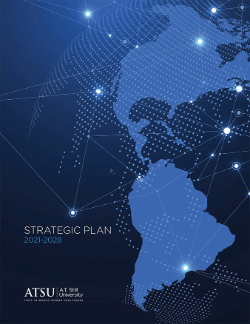
Beginning in October 2019, a 21-member strategic planning committee initiated development of ATSU’s 2021-2028 Strategic Plan. The final document represents many hours of thoughtful collaboration among faculty, staff, students, trustees, and external stakeholders.
Five themes guide the strategic plan.
- Innovative education
- Mission-focused scholarship
- Engaged, diverse University community
- Beneficial partnerships
- Agile resource management
-
-
Annual Report +
-

ATSU’s Annual Report provides a glimpse of the year’s events and achievements. To ensure the university continues on its path to preeminence and stays true to its mission, ATSU chooses three areas to concentrate its efforts each year. Read the complete 2022-23 Annual Report (pdf)
-
-
